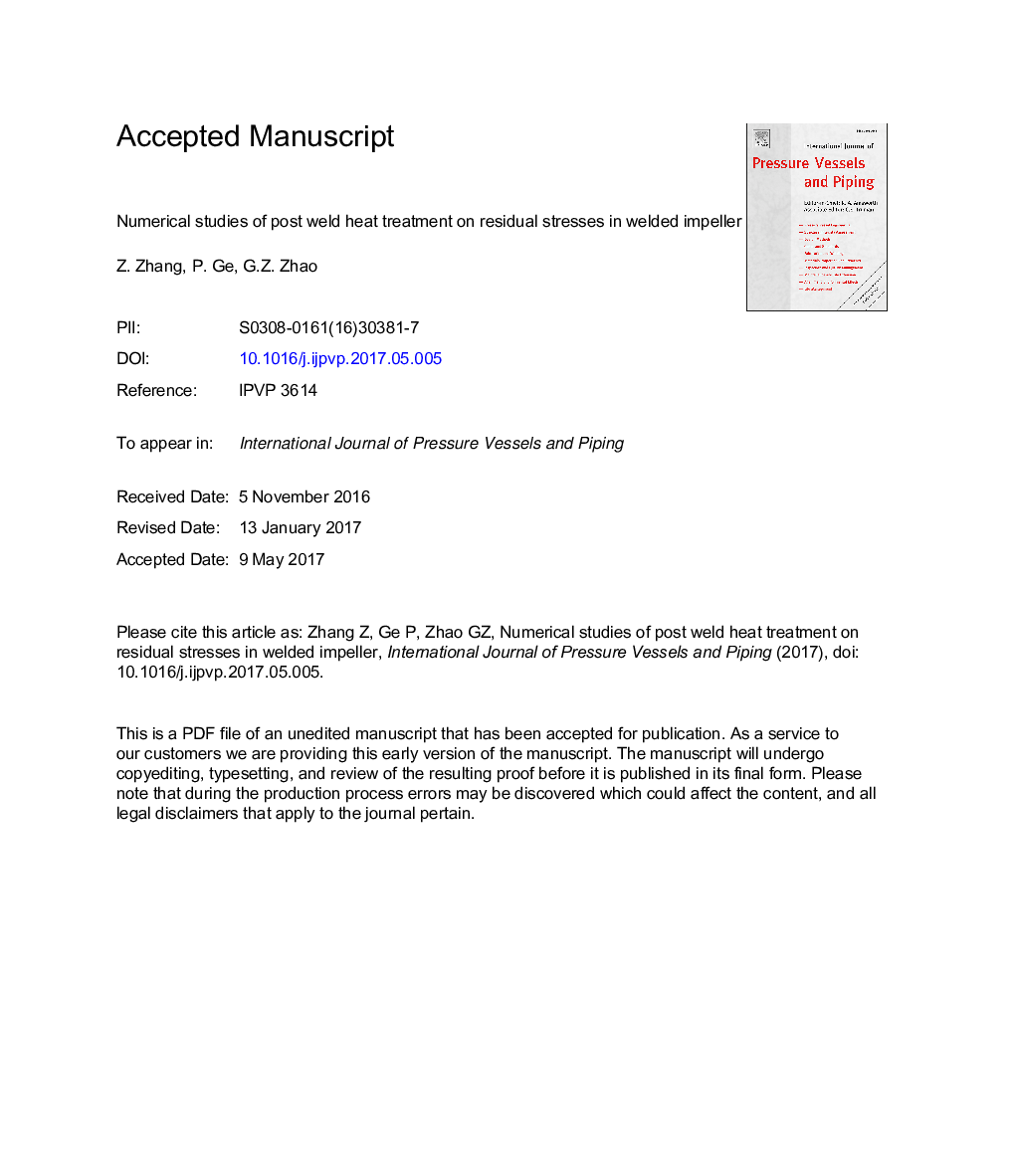| Article ID | Journal | Published Year | Pages | File Type |
|---|---|---|---|---|
| 5016855 | International Journal of Pressure Vessels and Piping | 2017 | 33 Pages |
Abstract
The temperature filed was simulated by use of the established moving heat source model of TIG welded impeller. The obtained computational temperature can be treated as thermal load for the computation of the residual stress near weld. The comparison with experimental data in published literature can validate the proposed models. The effect of the post weld heat treatment (PWHT) was studied by the Norton creep law model. Results indicate that the circumferential residual stress in blade is obviously higher than the vertical residual stress. The final residual stress in the impeller can be greatly decreased by the PWHT. The PWHT temperature is the most important factor in the PWHT process. Higher PWHT temperature can be beneficial to the decrease of the residual stress. But when the PWHT temperature is higher enough, stress concentration occurs at the corner of blade. PWHT process can obviously decrease the residual stress intensity factor.
Related Topics
Physical Sciences and Engineering
Engineering
Mechanical Engineering
Authors
Z. Zhang, P. Ge, G.Z. Zhao,
